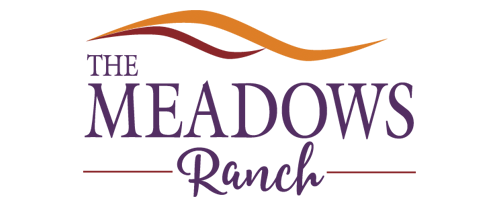Why Pro-Ana Websites Are Dangerous
By Bobby Shriver
You can find almost anything on the web these days, but did you know this includes pro-ana websites? While it may seem strange to some that eating disorder support online exists, for others, it’s an affirmation of their lifestyles and choices that masks the harmful effects of pro-ana culture, to dangerous results.
What is Pro-Ana?
The terms pro-ana (short for pro-anorexia) and pro-mia (short for pro-bulimia) refer to supporting — not discouraging — the harmful mindset and behaviors associated with these eating disorders. Rather than seeing these disorders as illnesses, pro-ana individuals will engage in anorexic lifestyle promotion, believing it’s simply a chosen preference to be normalized instead. This can often look like providing encouragement or guidance to those trying to start or maintain their anorexia.
Pro-ana or pro-mia supporters may even go as far as to discourage those with anorexia or bulimia from pursuing recovery or seeking treatment, offering pointers on how to hide weight loss from others or alter their weight at doctor’s appointments. This advocacy that anorexia or bulimia are lifestyle choices often shows up in various digital media like pro-anorexia blogs or full-fledged pro-ana websites, which create spaces for pro-ana individuals to find like-minded connections anonymously, away from those who might discourage their beliefs.
The Negative Impact of Pro-Ana Sites
These websites, often created by people who have the disorder, share information and advice that they believe will help weight loss. They post graphic photographs of women deeply suffering from anorexia — hollow-cheeked and lifeless — meant to “inspire” readers to lose weight.
What these anorexia websites and images fail to show however, are the devastating, sometimes unseen, effects that anorexia nervosa has on the body. Throughout anorexia nervosa’s cycle of self-starvation, the body is denied the essential nutrients it needs to function normally. Thus, the body is forced to slow down its processes to conserve energy, resulting in:
- Abnormally slow heart rate and low blood pressure (heart muscle is changing, increasing risk for heart failure as heart rate and blood pressure levels sink lower)
- Reduction of bone density (osteoporosis), which results in dry, brittle bones
- Muscle loss and weakness
- Severe dehydration, which can result in kidney failure
- Fainting, fatigue, and overall weakness
- Dry hair and skin; hair loss is common
- Growth of a downy layer of hair — called lanugo — all over the body, including the face, in an effort to keep the body warm
Pro-Ana is a symbolized choice to not go into recovery … a choice that can often mean choosing between life and death.
Members and moderators of these websites attempt to cultivate a sense of community, one based on superiority and pride through self-control. Pro-ana websites are for those who are already anorexics, who want to be “triggered,” and are looking for advice, tips, and support from fellow anorexics. Pro-ana is a symbolized choice to not go into recovery … a choice that can often mean choosing between life and death.
Why Do Girls Visit Pro-Ana Websites?
Most of the girls who visit Pro-ana websites have no desire to go into recovery or are not ready for recovery just yet. They feel that there are few other places where an anorexic can be open and honest about this fact without causing distress. Some girls feel persecuted and misunderstood everywhere else for not yet choosing to go into recovery. Whatever the reason, these websites pose health risks to pro-ana communities by actively promoting and encouraging a disease that has the highest mortality rate of any psychiatric disorder.
In fact, for females ages 15-24 who suffer from anorexia nervosa, the mortality rate associated with the illness is 12 times higher than the death rate of all other causes of death. Studies have shown that there has been a rise in incidence of anorexia in young women, ages 15-19, in each decade since 1930. There is no doubt that the rise of technology in the information age of the Internet has complicated this issue as well.
At The Meadows Ranch, our trained intake professionals create a warm, safe environment where women can seek admission into our program without fear of judgment. We recognize how difficult and scary taking that initial first step towards recovery can be, especially when you have strong pro-eating-disorder support online. That is why we are here to help make the process as easy and nurturing as possible.
Dangerous Pro-Ana Content: Eating Disorders and Social Media
In addition to pro-ana websites, social media has also contributed to the rise of eating disorders today. According to The New York Times, experts indicate that fitness influencers on social media often serve as a funnel to draw young people into extreme online eating disorder communities. Other fashion and beauty influencers have also been accused of promoting eating disorders.
While major social media platforms like TikTok try to crack down on dangerous pro-ana content, other trends that advocate thinness as the ideal remain popular. Even so, The NYT goes on to report that some TikTok content supporting eating disorders is still widely accessible, with certain related hashtags generating over 70 million views.
Considering the tendency of users to share their best moments combined with content that promotes body image distortion online, The Brookings Institution suggests that social media can exacerbate insecurities and mislead users down dangerous paths into eating disorders and the associated health risks of pro-ana communities.
Take Off Your Pro-Ana Bracelets
When most people see someone wearing cause-related pieces of jewelry, they admire their efforts to raise awareness about a specific illness or to advocate for the health and well-being of those who have been affected. We’ve all seen people wearing pink ribbons, a Livestrong bracelet, or the red AIDS band.
But for members of the pro-ana community, their adopted red bracelet has a darker connotation. In an interview with BuzzFeed, National Eating Disorders Association (NEDA) CEO Lynn Grefe called the sale of the red bracelets “appalling.”
“Is someone making pro-cancer or pro-heart disease necklaces? Replace the word ‘ana’ with ‘cancer,’ and you realize how absurd and how sick this is, to be encouraging people through jewelry to stay sick. I find it unforgivable,” Grefe said. “I really encourage people to take a step back and ask if they want to promote a life-threatening illness and promote death … The longer people are visiting those sites, the longer they’re not getting treatment.”
What Causes Anorexia Nervosa?
Eating disorders are a disease. However, unlike many other conditions such as leukemia, HIV, or kidney disease, there is no blood test available to test their presence in the human body.
 Whether this disorder presents in a child, adolescent, or woman, dealing with anorexia is extremely difficult for the individual and her family. The idea of anyone literally starving themselves up to the point of death makes no sense to friends and family. Sometimes it doesn’t even make sense to the anorexic individual; she just knows that she is overwhelmed with feelings of guilt and fear when she eats.
Whether this disorder presents in a child, adolescent, or woman, dealing with anorexia is extremely difficult for the individual and her family. The idea of anyone literally starving themselves up to the point of death makes no sense to friends and family. Sometimes it doesn’t even make sense to the anorexic individual; she just knows that she is overwhelmed with feelings of guilt and fear when she eats.
While scientists and medical professionals still work to identify the causes of eating disorders, there is a consensus that some of these factors play a part:
- Culture: Women worldwide are under constant pressure to fit a certain ideal of beauty. Vulnerable girls and women are bombarded in the media by body image distortion online and unreal standards of what the “perfect” body is. It makes it hard for women to feel good about their bodies when they are too busy feeling the pressure of these unattainable standards.
- Family: Those who have a mother or sister with anorexia have a propensity to develop the disorder. Parents who think looks are important, or they themselves diet, or criticize their children’s bodies are more likely to have a child with anorexia.
- Traumatic or Stressful Events: Traumatic events, life changes, or stressful events can trigger the onset of anorexia.
- Personality Traits: A female with anorexia may have a negative view of herself. She may hate the way she looks or feel hopeless. She often sets hard-to-reach goals for herself and focuses on being perfect.
- Biology: Genes, hormones, and chemicals in the brain may be factors in whether women develop anorexia.
Recover From Anorexia Nervosa
Some of the effects of being underweight (i.e. having a BMI below 17.5) contribute to maintaining the eating disorder: being preoccupied with food and eating, becoming socially withdrawn, and losing interest in other activities.
Becoming indecisive, feeling a heightened need for routine and predictability, and feeling increased sensations of fullness after eating, all help to create vicious circles in which the only way to avoid mental or physical discomfort in the short term is by continuing to starve. But the only way to escape these problems in the long term is to regain weight.
Your true character remains hidden when your body is starved, though it can be rediscovered when you start to eat again and stay committed to the process of recovery.
While sufferers of anorexia may be convinced that their present state reflects their personality, in fact their personality is masked by the effects of being underweight, and their own personality will only emerge again if weight is regained.
Anorexics sometimes fear that they will stop being “special,” or stop knowing who they are if they regain weight, but of course there is nothing special about being severely underweight. Your true character remains hidden when your body is starved, though it can be rediscovered when you start to eat again and stay committed to the process of recovery.
The two facts of key importance to the sufferer of anorexia who is aware of the bleakness of the way in which she is living but cannot resolve to change are as follows:
- If you regain weight, not only the physical effects of your current state (being constantly cold and weak, sleeping and concentrating poorly, having unhealthy hair and skin) will disappear, but so will the ways in which you currently think and feel. Your body is starved, and your character and thoughts are dominated by this starvation, but they will cease once you allow yourself to regain weight.
- There is no point in waiting for the magical moment at which you decide, once and for all, that you want to start eating more again, or to regain weight. Your starved state is making you unable to think flexibly enough to fully comprehend the possibility of eating or living differently, or even the possibility of wanting to think about and enjoy things other than food. It has hidden from you who you really are, making you believe you are nothing but the anorexia, and that the smallest piece of food is too much. For these reasons you will never truly want to recover, but you must seize all your feelings of desperation and recklessness to make yourself plunge into that first day and first meal of recovery. As long as you keep yourself going, keep eating, through the first difficult weeks, it will get easier and easier.
Learning How to Have a Healthier Body Image
Having a negative image of your body can certainly be associated with eating disorders, especially those who’ve been influenced by body image distortion online from pro-anorexia blogs, social media, and websites. That’s why it’s key for anyone who’s experiencing body image distress, whether they have an eating disorder or not, to take steps to embrace body positivity instead.
Yet adopting a healthier body image is often something you can’t accomplish overnight. With that said, NEDA shares some practical steps you can take to begin developing a more positive body image, including:
- Appreciate all that your body can do
- Keep a list of things you like about yourself
- See yourself as a whole person
- Surround yourself with positive people
- Wear comfortable clothes that make you feel good about your body
- Become a critical viewer of body-related media messages
But for those currently dealing with anorexia or other eating disorders, getting professional help to address the underlying causes of your struggles may be the best first step towards healing.
Why Our Anorexia Treatment Is Successful
The cornerstone of all treatment at The Meadows Ranch is the complete focus on the individual. That’s why treatment duration is highly flexible and based on each patient’s unique needs. You may only need one or two weeks, or it may be crucial for you to stay 30 days or longer. Our age-appropriate program based here in Arizona offers care to girls as young as 8 and ensures that each patient receives treatment from professionals specializing in her specific age group. Your individualized treatment plan will be implemented by a multidisciplinary team of professionals. These include a psychiatric and primary care provider, a registered dietician, a licensed master’s- or doctoral-level therapist, a psychologist, and registered nurses.
Along with treating your eating disorder, our team will also treat any co-occurring issues such as depression, anxiety, substance abuse, or trauma that you may have. In addition to individual and group therapy, you will engage in experiential treatments such as art therapy, body image groups, equine therapy, and challenge course therapies.
We Are Here to Help
We have treated anorexia for more than 20 years. We know recovery from an eating disorder is absolutely possible. It’s happening every day here at The Meadows Ranch. Based on feedback from patients, families, and professionals, the vast majority of our patients remain committed to a life of health, balance, and purpose. If you or someone you love is struggling with an eating disorder, contact us today to learn more about how we can help.

